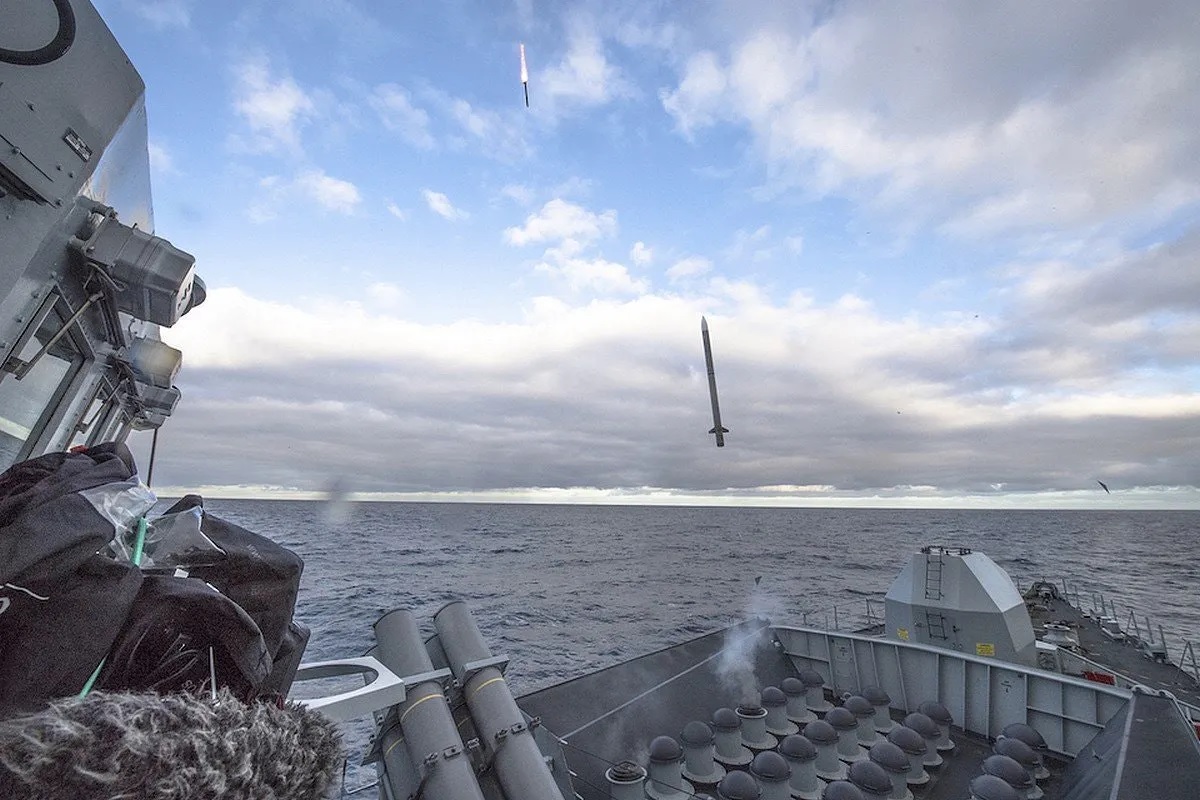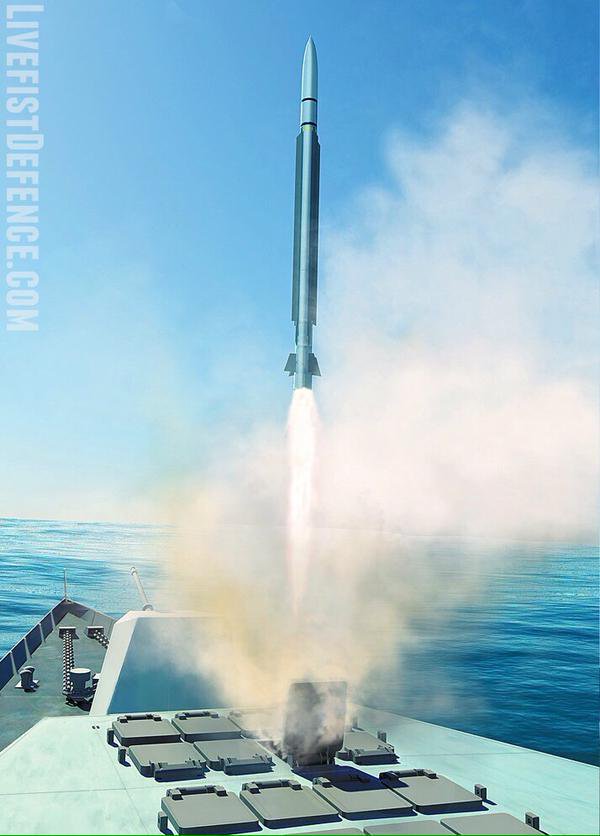
An Indian Navy procurement contest to choose a short-range surface to air missile (SRSAM) system for its Kamorta-class anti submarine ships begins today. The procurement to meet an urgent requirement for the new in-service corvettes could pave the way for expanded orders for future ships, including the navy’s 6 new generation missile vessels (NGMV) and P17B stealth frigates. Livefist can confirm that several missile systems have been bid to met the requirement, including UK’s MBDA Sea Ceptor, an improved version of Israel’s IAI Barak, and offerings from Russia, Sweden’s Saab and South Korea.
The navy’s three indigenously built Kamorta-class corvettes, commissioned starting 2014, have remained without crucial air defence systems, relying on a pair of AK-630M close-in weapon systems. The navy is hoping the modest size of this fresh requirement will allow it to go through without budgetary and other hurdles that have bedeviled a parallel effort to procure SRSAM systems for the Indian Army.
The new bids for the navy’s SRSAM have mostly been submitted as partnerships with Indian firms or via existing joint ventures. For instance, MBDA’s Sea Ceptor bid comes in via its joint venture with Larsen & Toubro, while the Israeli bids will likely be in partnership with India’s Kalyani Group. The current requirement is understood to be for ten systems covering the Kamorta-class corvettes, with about 150 missiles.
The Indian Navy larger ships deploy the Indo-Israeli Barak-8 long range SAM (LRSAM) — the Kolkata-class and incoming Visakhapatnam-class destroyers, the INS Vikarmaditya and incoming INS Vikrant aircraft carriers and the incoming P17A/Nilgiri-class frigates. The older Barak-1 point defence missile system arms other frontline vessels, including some of the P15/Delhi-class destroyers and P17/Shivalik-class frigates. The Indian Navy’s Russian built Talwar-class frigates deploy the Shtil-1 (a naval version of the Buk SAM) missile for air defence duties.
Israel is understood to have bid an improved version of the Barak-1 for the new navy contest.
MBDA has focused its bid on the Sea Ceptor system which uses the Common Anti-Air Modular Missile (CAMM), choosing to leave out the VL MICA that was pitched as a prospect alongside the Sea Ceptor in response to the Indian Navy’s preliminary request for information in 2017. MBDA will be stepping into the contest with mixed feelings. A high-profile push to jointly develop a new SRSAM with India’s DRDO named ‘Maitri’ that has twisted and turned for well over a decade was finally shelved a few years ago. India’s DRDO is understood to have had second thoughts, submitting to the Indian MoD that it would evolve its own system without an external partner. Drawing technologies from the VL MICA and Aster programs, the Maitri is theoretically still on the table, say MBDA officials at the company’s Bolton, U.K. facility, but the proposal is unlikely to be resuscitated.

MBDA has underscored the ‘soft launch’ mechanism that propels the CAMM missile out of its cannister and well into the air before the rocket motor triggers — a quality that reduces system mass, eases installation and simply makes firing the missile an affair that doesn’t the deck baked or swathed in smoke. The soft launch is visible in this video of the Sea Ceptor’s firing trials from Royal Navy Type 23 frigate HMS Argyll:
In January 2018, a $2.2 billion Indian Army contest for SRSAM systems, much larger than the Indian Navy’s requirement, was scrapped in the final stages after India’s DRDO was able to persuade the Army that the improved indigenous Akash SAM system would meet its short-range requirements. The contest that collapsed was a three-way fight between Saab’s BAMSE, Israel’s SpyDer & Russia’s Tor-M2KM. The Akash system cannot be navalised for a variety of reasons, including the lack of a vertical/cannisterised launch option, and will therefore remain deployed with the Army and Indian Air Force.
In 2017, India’s DRDO also unveiled a new Quick Reaction SAM (QRSAM) to meet an Indian Army requirement for a missile with a reaction time of six seconds or less, an engagement range of 9-15 km at altitudes of not less than 6 km. The QRSAM is currently in development firing trials. It is unclear if the DRDO’s indigenous naval SRSAM (the one over which it has decided not to pursue the joint Maitri project with MBDA) will be a derivative of the QRSAM system or a clean-sheet weapon system.

Yeah sure. Cause DRDO does not have a QRSAM at all… lol